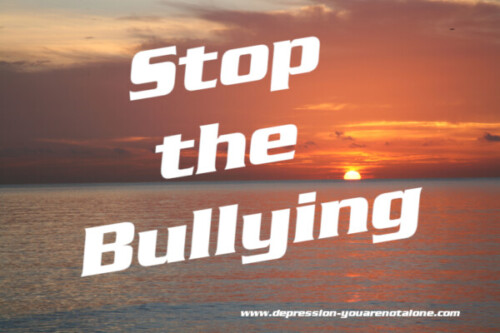As bullying is so prevalent, and destructive we have decided to post a series of informational articles, one per day, beginning July 5 and ending Wednesday, July 14. On Friday, July 16, we will begin a series of informational articles dealing with cyberbullying. – Editorial Team
Bullying and Trauma
Bullying can have lasting impacts on everyone involved: the person being bullied; bystanders who witness the bullying; and the person who bullies others. In fact, bullying is considered an Adverse Childhood Experience (ACE). ACEs are potentially traumatic events that can have negative, lasting effects on a person’s development, the way they interact with others, and how they perform in school. Research has shown that children reporting more ACEs may be more likely to exhibit bullying behavior.
Understanding Trauma
The Substance Abuse and Mental Health Services Administration (SAMHSA) defines trauma as a result of an event, series of events, or set of circumstances that an individual experiences as physically or emotionally harmful or life threatening. These experiences can have lasting adverse effects on a person’s mental, physical, social, emotional, or spiritual wellbeing.
Childhood traumatic stress occurs when traumatic events overwhelm a child’s or teenager’s ability to cope, such as:
- Neglect and psychological, physical, or sexual abuse
- Domestic violence or intimate partner violence
- Community and school violence (including bullying)
- Natural disasters
- Terrorism, war, and refugee experiences
- Serious accidents, life-threatening illness, or sudden or violent loss of a loved one
- Military family-related stressors, such as parental deployment, loss, or injury
While each child may react differently to trauma, parents, caretakers, and teachers may be able to recognize some signs of traumatic stress. For example, preschool children may have nightmares or fear of separation. Elementary school children may feel shame or anxiety, or have trouble concentrating. Kids in middle and high school may show signs of depression or engage in self-harm behaviors. Child trauma survivors are more likely to have academic problems and increased involvement with the child welfare and juvenile justice systems.
The Connection between Bullying and Traumatic Stress
Every individual is different and incidents that traumatize one person may not affect another. As stated by the National Child Traumatic Stress Network (NCTSN), children or teens who have been exposed to trauma and violence may be more likely to bully others and be bullied.
Some children who experience trauma and bullying may have strong feelings of distress, while other children may appear desensitized. As an example, a study on bullying and post-traumatic stress found that some children may repress their thoughts or feelings about what took place. This can lead to numbness or loss of interest in activities. This study also found that children may experience intrusive thoughts, such as sudden flashbacks of their bullying experience. It is important that caregivers understand how to respond to bullying and are sensitive to possible traumatic stress.
What Helps After Trauma from Bullying
Parents, teachers, and other trusted adults can help children or teens who experience traumatic stress from bullying. According to NCTSN’s Effective Treatments for Youth Trauma, some approaches that help children and teenagers who have experienced trauma, including bullying, are:
- Ensuring the child or teen is safe and seek ways to prevent future bullying experiences
- Talking through what happened and why, to help clear up misconceptions about their role in the traumatic event
- Teaching stress management and relaxation techniques, to help them cope
Some children and teenagers may also need professional help to treat stress related from bullying and/or other traumatic experiences. Healthcare providers can make referrals for treatment.
How Schools and Teachers Can Help
Schools can adopt a trauma-informed approach, by training teachers and staff skills to handle and recognize traumatic stress or other signs of trauma. These skills allow teachers to help or find other supports and services for students in need.
Resources like the Trauma-Sensitive Schools Training Package from The National Center on Safe Supportive Learning Environments (NCSSLE) may help schools adopt trauma-informed approaches to create safe and supportive learning environments. These include:
- Educating school staff about trauma and its effects
- Promoting physical and emotional safety in relationships and the environment
- Reducing trauma-related triggers in the school environment
- Considering trauma in all assessment and protocol behavior plans
- Ensuring students and families have voice, choice, and empowerment
By adopting trauma-informed approaches, schools can help prevent bullying and trauma at school, and provide a positive school culture for both students and staff.
Parents, caregivers, teachers, and schools all play an important role in preventing and addressing bullying and its harmful effects.
Source: stopbullying.gov

